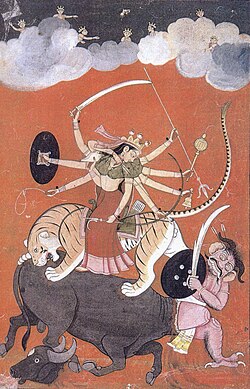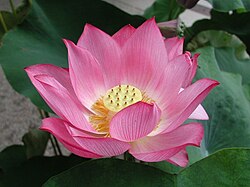SemanticWeb Nomination
Contents
Quick intro
The Biodiversity Of India website is under the umbrella of Project Brahma, a not-for-profit initiative aimed to create awareness about biodiversity conservation and the domino effects of species loss in India and across the world.
Need for the website
India is a megadiverse nation, housing around a tenth of world's species. India also has a rich cultural heritage going back thousands of years. Much of Indian biodiversity is intricately related to the socio-cultural practices of the land. Unfortunately, due to population explosion, climate change and lax implementation of environmental policies, several species are facing the threat of extinction. Not only does this affect the food chain, but also the livelihood and the culture of millions of Indians who depend on local biodiversity.
It is vital that the common man is made aware of the domino effect of species loss and what we stand to lose. Project Brahma aims to create such awareness, by increasing participation of the people in biodiversity documentation and conservation. In addition, there are several organizations carrying out notable conservation work in India. Our aim is also to create a central resource where such organizations can access all kinds of knowledge about Indian biodiversity. We imagine that the Biodiversity of India website will significantly enhance environmental conservation efforts in India.
Aims
The final objective of Project Brahma is to promote biodiversity conservation through increasing community participation in the activity. Currently, the four major hurdles to community participation are: 1.Lack of awareness about woes facing India's biodiversity: It can be assumed that many Indians know about environmental degradation. For people in cities, it is the excessive pollution and water woes that sensitize them to environmentalism, while in the rural areas, it is the irregularity of monsoons, reducing crop yields, reduction in groundwater and a host of such issues. However, relatively few people are aware of the alarming reductions in the flora and fauna.
2. Lack of awareness about what is at stake: People do understand that messing up with earth's weather will have disastrous consequences on a lot of things. However, what about biodiversity loss? Indian biodiversity is of a unique kind in this world. It has intricate links with our socio-cultural practices and medicinal knowledge. However, these links are rarely appreciated. Loss of biodiversity not only leads to extinction of a given species, but also extinction of the cultural practices and local knowledge associated with that species. For example, tiger is the national animal of India. Tiger is also considered the vehicle of Goddess Durga. They have been depicted as symbols of majesty in Indian culture. However, a resource that makes such knowledge accessible to the common man as well as integrates traditional knowledge with modern scientific inquiry does not currently exist. If such links are depicted clearly, the significance of biodiversity conservation will become more evident to the common man.
3. Inaccessibility of resources for getting that knowledge: Lack of awareness about biodiversity loss can be assumed to be highest among the urban population; people in villages tend to observe the diminishing populations of plants and animals right in front of their eyes (But now-a-days, people living in villages are moving towards small towns and cities. So, most of our traditional knowledge, which is passed down orally, is being rapidly lost...). This lack of awareness in the urban populace is primarily due to having not enough exposure to nature. Additionally, people cannot readily access information about local biodiversity. Most of such information is contained in books, journals or on websites aimed towards the research community.
4. Unavailability of tools that foster community participation in conservation: The first thing that needs to be done for increasing community participation is to get more and more people interested in biodiversity. Raw data, textual information would be of limited use in achieving this. Thus, resources aimed at the common man, to get him more involved in biodiversity conservation are the need of the hour.
Project Brahma provides a unique perspective in tackling these hurdles.
1. Making biodiversity accessible: Although several biodiversity-related resources exist for Indian biodiversity [7], most Indians find these resources rather inaccessible (eg:books in libraries). Additionally, many such resources are limited access i.e. created, curated and managed by experts. Although expert curation substantially increases the quality of data, the common man is shut out of the process of knowledge creation and documentation. Through Project Brahma, we aim to make the process of entering and extracting information related to India's biodiversity easy and accessible to everyone with an Internet connection.
2. Making biodiversity interesting: As mentioned above, the first step for increasing community participation in biodiversity conservation is to make biodiversity interesting and approachable. We live in an Internet age, where technologies such as Youtube, Flickr, RSS and Atom feeds, Google Maps, Twitter etc. provide us with a unique opportunity to make people more interested in knowing more about India's flora and fauna. Project Brahma aims to make full use of these and other available technologies as a means to get more people involved in biodiversity conservation.
3. Education and awareness: If we are to pique people's interest in biodiversity, it is important to do it the right way. Means such as video compilations, quizzes, online learning modules are excellent ways to create rich learning resources. Using expert-knowledge, we plan to create a repository of online learning modules related to India's environment and biodiversity
4. Increasing community participation: The final goal of Project Brahma is to get more and more people involved in biodiversity conservation. Through biodiversity documentation, creation of online learning resources, social networking and Web 2.0 technologies we hope to achieve part of this aim. These approaches would also be supplemented with grassroots level activities, in collaboration with NGOs, schools and colleges, which feed information into Project Brahma. We hope that such a multifaceted approach will provide a significant boost to community participation in biodiversity conservation.
Who's involved
We are common, everyday folks who felt agitated by the problem of species loss and decided to do something about it. People running this site on everyday basis are PhD students and postdocs from reputed academic institutions in India and abroad. However, our contributors and supporters have included people from all walks of life - web designers, artists, college professors, freelance writers, NGO activists and academics. A list of people who have contributed the most to the site is available here.

